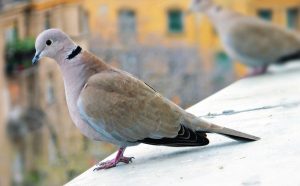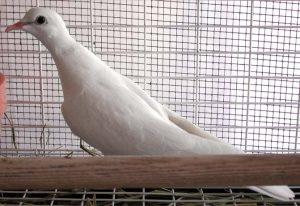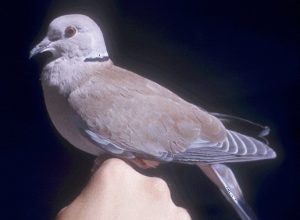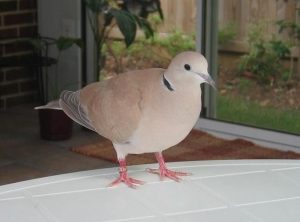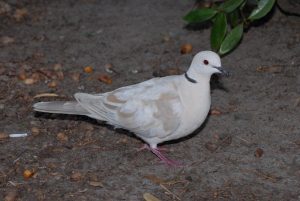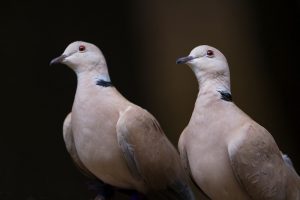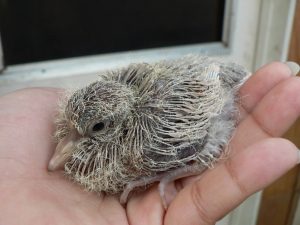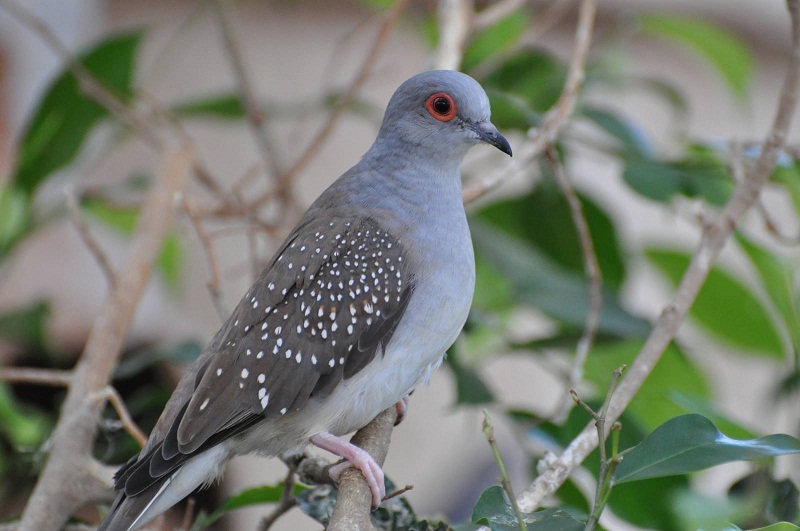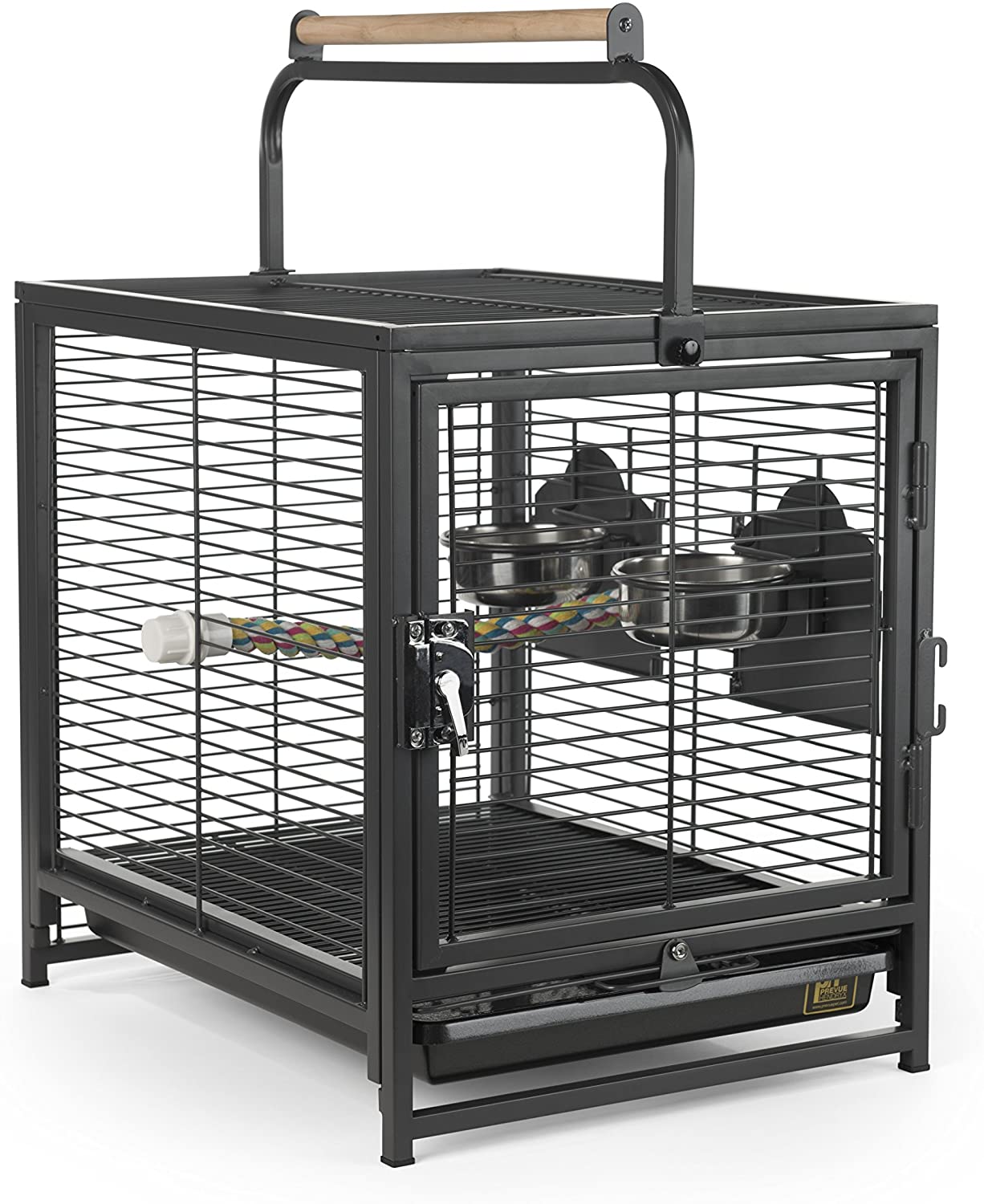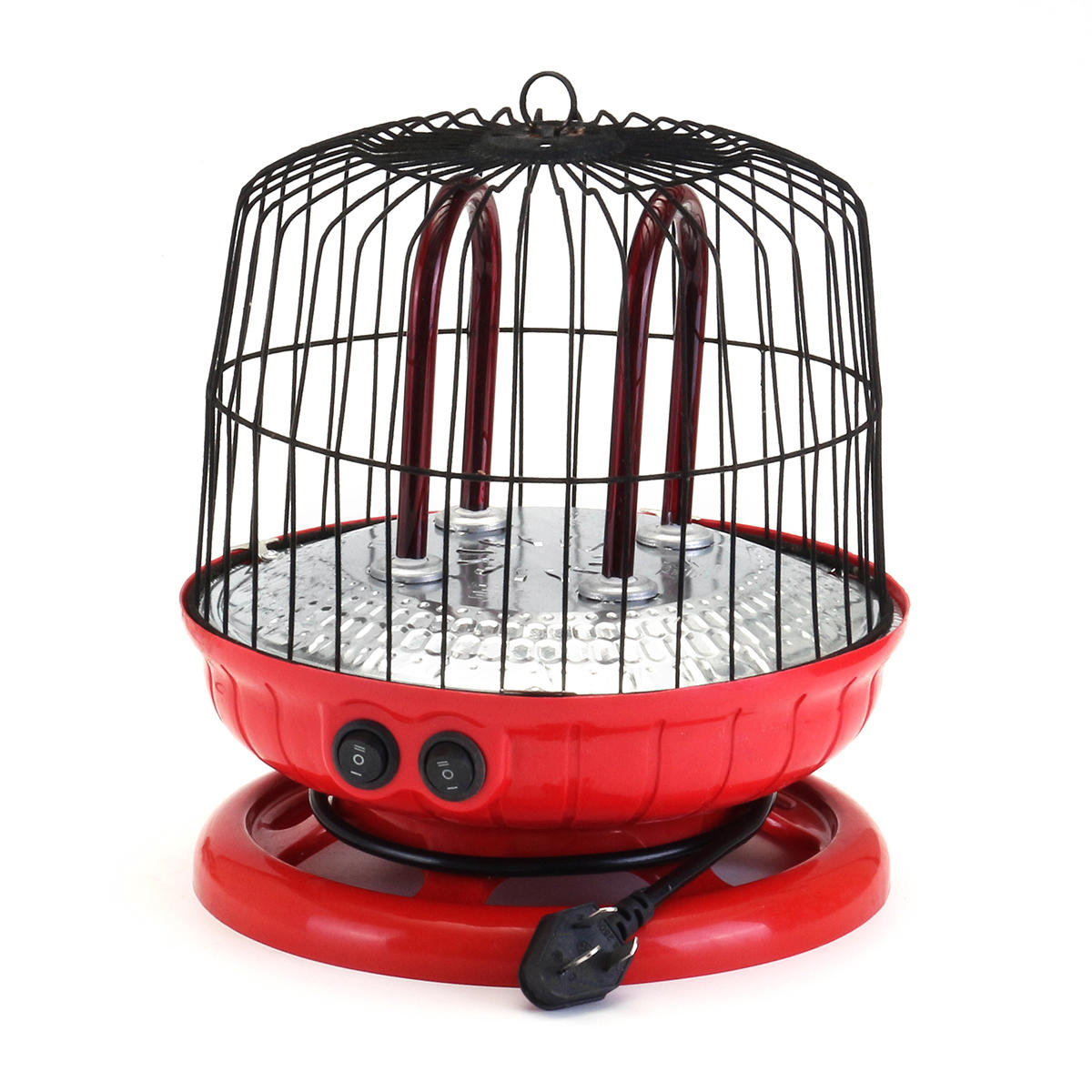Ringneck doves, the most common of all doves, are popularly known as the barbary dove when they are domesticated. Although originated in Africa but this medium sized bird is frequently seen in the states of US like Florida and Georgia.
Scientific Classification |
|
| Kingdom | Animalia |
| Phylum | Chordata |
| Class | Aves |
| Order | Columbiformes |
| Family | Columbidae |
| Genus | Streptopelia |
| Scientific Name | Streptopelia risoria |
Quick Information |
|
| Other Names | Barbary dove, Ring-necked dove, Half-collared dove, Cape turtle dove, Ringed turtle dove, Ring dove. |
| Size | 9 –12 in (22–30 cm) |
| Weight | 92–188 gm |
| Color | Fawn colored plumage with a black ring around the neck, brown eyes and beak, pinkish to purple feet. |
| Distribution | Africa |
| Subspecies |
|
| Habitat | Semi-deserts, farmlands, and woodlands |
| Sound and call | Usually coarse “kuk-coorrrr-u”, while warding off other doves they emit “knarrrrrr” or
“Kooorr” sound. |
| Clutch | 2-4 eggs |
| Incubation period | 2 weeks (approx) |
| Fledging | After 16 days |
| Lifespan | 10-15 years, sometimes over 20 |
| Diet | Fruits, leaves, seeds, and insects |
| IUCN Conservation Status | Least Concern |
Color mutations
Amidst more than forty mutations some are listed below:
- White or albino
- Apricot
- Blond frosty
- Blond ivory
- Bull-eyed white
- Pied
- Orange
- Peach
- Pink
- Rosy
- Tangerine
- Violet neck and so on
As pets
With their amicable behavior, they have won the hearts of people. If you wish to keep them especially as a pair then an abundance of joy, happiness, and love are surely on the cards for you. A fair warning: Never house two males together as it accelerates the aggressiveness in them.
Housing
Length and width of a cage are more important aspects than the height for your dove. Arrange a moderately large cage favorable for your pet’s movement. Multiple perches of different diameters should also be furnished inside the cage for its feet grooming. Also, provide some toys for its entertainment.
Temperature
The ideal temperature range for your pet dove is 65°F-75°F. Ensure a draft free environment that is neither too cold nor too hot.
Behavior
This bird is a social one who enjoys the company of its owner. Easy to tame, social, and friendly, this dove can mix well with children in the house. A ringneck or the barbary dove likes its personal space as well.
Feeding
Provide commercially available pigeon mix, vegetables, fruits, grits, vitamin, and mineral supplements. They will also relish the treats of crushed bread and cornmeal once in a while.
Care
This dove likes to stay fresh and clean all the time, so bathing daily is required. Also, cleaning the cage with soapy water is needed for your pet’s well-being.
Health problems
Red mites, tapeworms, and other kinds of worms might affect it. If your pet encounters such infections, respiratory ailments, rapid feather loss, and diarrhea then consult a vet immediately.
Price
Each pair costs between $10-$30, depending on the mutation.
Interesting facts
- The universal peace symbol featuring a white dove is actually an image of the white mutation of this bird.
- The numbers of mutations are increasing rapidly as this dove is capable of breeding from an early age of six months.
- If a male and female are housed together, they mate and then the female lays eggs in the food bowl, without any nest box.
Video: Ringneck dove cooing and playing
References



